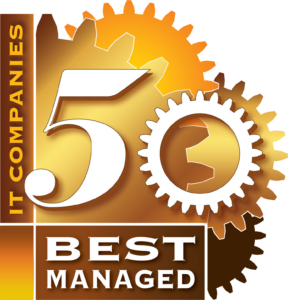
The Importance of IT Maintenance Today
The Importance of IT Maintenance Today
The importance of IT maintenance is clear when you consider the problems and pain points that businesses face without it.
The Normalization of Failure
We’ve come to define the most common pain points that prospective clients deal with as “the normalization of failure.” That manifests as apps crashing on a regular basis, people restarting applications, and restarting computers daily, or hourly, because that’s the normal way to solve those problems. It also includes major system outages that last for days and sometimes weeks.
Lots of businesses simply aren’t aware that that’s not normal. Computer systems shouldn’t go out for a week and come back on again. Outages need to be immediately addressed. And proactive maintenance ensures that these things don’t go down.
Stability is the direct result of a constant effort to maintain your systems. That means you replace equipment when it’s past its useful life. You upgrade operating systems when they’re no longer supported.
It’s no different from changing the oil in your car. You can drive your car for a long, long time without changing the oil. Eventually, however, you’ll have a disaster on your hands — and so will your IT systems.
Unfortunately, we often onboard new clients after a horrific event has occurred. That was what drove them to change. That’s why we work with our clients is make sure those horrific events can’t happen. And we do that with a rigorous maintenance program to make sure systems are up all the time. The work stations, servers, and back-end maintenance usually aren’t visible to the end-users, but it has to happen in order to keep the engine running.
The Results of IT Maintenance
The outcome of IT maintenance on a regular basis, is, in a word, stability.
Everything just working becomes the norm. It used to be a goal, but now it’s expected. And that’s excellent.
With proper maintenance, the network stays up all the time, the backups work, and the off-site disaster recovery is tested regularly. The worries over whether your IT will work tomorrow are completely eliminated. And when companies reach that point, we can all turn our collective focus toward making real value changes to the business.
In other words, when we do our jobs right, clients get to a point where they wonder what they’re paying us for — because everything just works. You even start to wonder why you need an IT support company.
So much IT maintenance happens in the background. Technical alignment work, monitoring, centralised services, and maintenance aren’t entirely visible to each user, which in itself is a sign of stability. And that’s really the goal.
Established IT Maintenance is the Foundation for More Effective Operations
Once the network is solid and secure, the conversation immediately turns to “What’s next?”
That’s where the ongoing value comes into play. We don’t wonder if the network is secure, we wonder how we can make the boat go faster. And those conversations provide the most value.
Components of IT Maintenance
People often see maintenance as a black box. They don’t really know what happens or what needs to happen, or even what the process is.
The basics start with patching workstations and servers. And that includes ensuring that the latest security updates are running on all of your workstations and servers. Also, our technical alignment staff makes regular on-site visits to make sure that everything within the IT environment is properly aligned with best practices.
If we’re following best practices all the time, we have a stable network by definition. Because that includes monitoring alerts from all of the devices on your network. If there’s a power outage on your network, for example, we need to know about that. If something is reporting an imminent failure, we need to know so we can take action.
Further, our monitoring tools watch everything that’s happening on your network. Our alerting systems tell us that there’s a potential problem or imminent failure.
Maintenance is something that never stops. It’s silently running in the background as a process that reports to us. It’s a technical alignment engineer on-site at your business every four to six weeks. And it ensures that you’re constantly aligned with best practices to provide that stability.
Technology Best Practices are Universal
IT best practices are easy to overlook. But every organisation is very similar from an IT perspective.
It doesn’t matter what kind of industry you’re in. Law firms, manufacturing companies, insurance companies, or municipalities — all of those organisations have most of the same technology.
Everybody has servers, a network, email, WiFi, firewalls, etc. And one of the things we focus on the best practices for each individual piece of technology.
What’s the best way to lock down your firewall to secure your network? Or the best way to backup your information? Whatever industry or organisation you’re in, it’s all very similar.
Managing the Health of Your IT
One of the big things that make clients’ lives better is visibility into their IT infrastructure’s health.
Part of our maintenance program is evaluating how our clients stack up against our best practices. And we provide a health score based on that evaluation. It’s an easy way for executives and business owners to look at their IT from a very high level.

That health score also empowers good decisions around IT maintenance. If your company is 99% aligned with best practices, for example, you know that you don’t have to worry about IT today. If you’re 93% aligned, there might be four or five recommendations to consider for your organisation.
Those recommendations might relate to security, upgrades, or something as simple as an older piece of hardware that needs to be replaced. It could be an opportunity to leverage a new piece of technology to drive efficiency in the organisation.
Again, once everything just works and the risks are managed, our clients can focus on the bigger picture instead of dealing with IT problems.
Our job, from our perspective, is to put the right information in front of business leaders to make informed decisions. And those changes help our clients meet their broader business goals.
And finally, business leaders have peace of mind. You can sleep at night knowing that the risks are managed. There’s a plan in place for any kind of worst-case eventuality, which in itself is a valuable thing.



